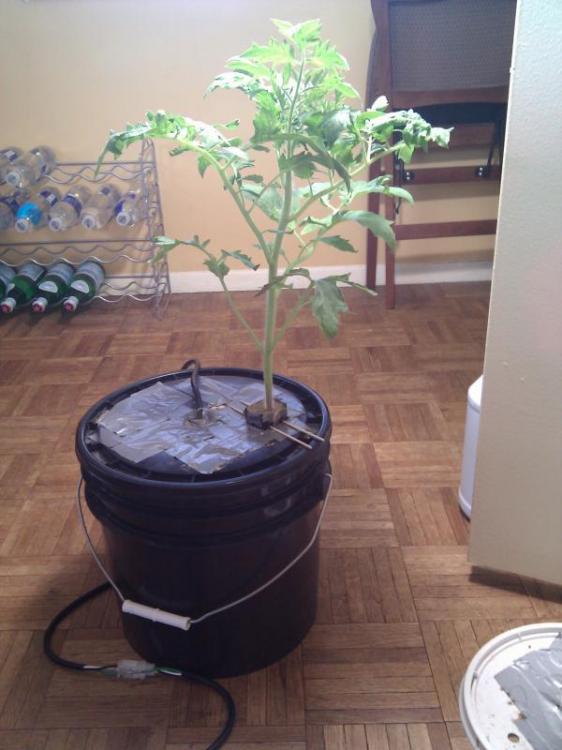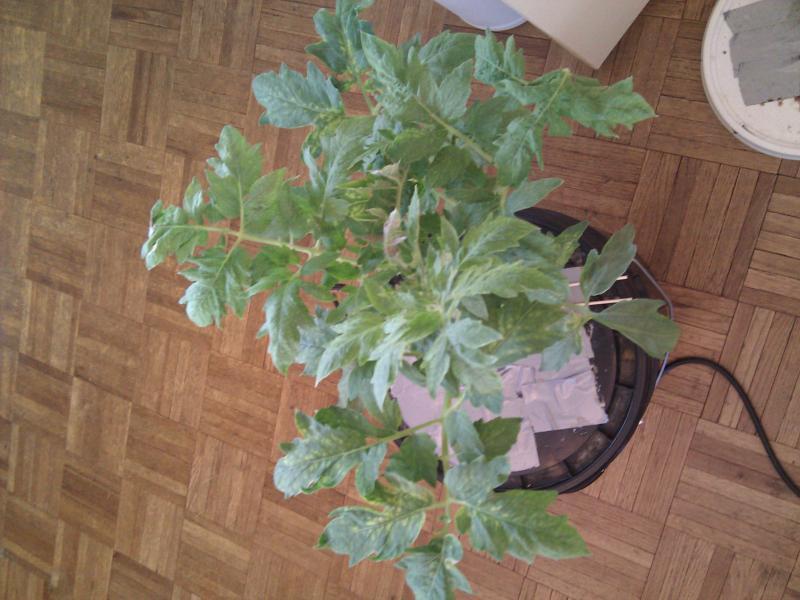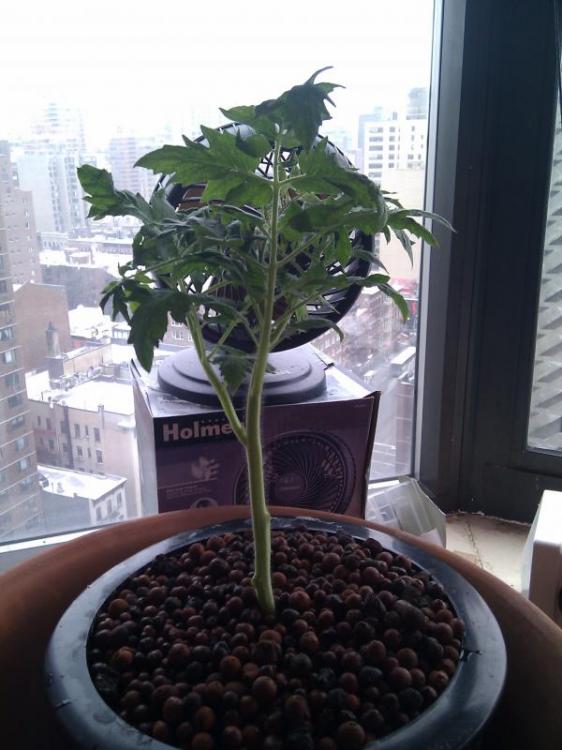
KennethT
participating member-
Posts
6,942 -
Joined
-
Last visited
Content Type
Profiles
Forums
Store
Help Articles
Everything posted by KennethT
-
I do a lot of SV now, and have a few circulators, but years ago, when I first discovered eGullet and SV, I started doing it in a pot on the stovetop. It's certainly fine for things that don't take a lot of time - fish, chicken breast, etc. Like the OP, I didn't want to sink a lot of money into something I wasn't going to use, or get something and have the results not be worth it. After just a few experiments on the stovetop with a thermometer, I was hooked! One thing I learned doing it this way is the value of covering (or uncovering) the pot. When cooking fish at low temp (I cook salmon at 115degF), I actually kept the pot uncovered because I found the temp crept up a bit, even with my burner (electric at the time) at the lowest setting, if it was covered. Chicken breast at 140degF was best covered and I found that once up to temp, keeping the burner on the lowest setting kept the temp stable. So just a stir once in a while to make sure there are not hot/cold spots. Once the water was up to temp, and the burner turned to low, I found that it didn't make a difference if the bag sat on the bottom, in contact with the pot, or not. Using a long thermocouple probe I borrowed from work, I found that the temp was the same - even the pot temp at the bottom, so long as the burner is very low.
-
You can seal practically anything in a bag and reheat in the water bath. I do it all the time. It's great when you have a dinner party - everything can be precooked, then 10-20 min. before each course, just drop the bags in a 120-130degF bath to reheat. Works great for mashed potatoes, sauces, etc. - especially for those of us with very limited stove-top space! Like rotuts said, just keep in mind that it's no longer pasteurized, so treat it like you would any normal non-SV food - no longer than a week in a cold refrigerator, etc...
-
I've also noticed the bit of "dark meat" on a pork chop - you're talking pork rib chop, right?. Whenever I ate it, it always reminded me of the strip of meat on the outside of a beef prime rib that is very different from the center cut meat. Back when I had more time and was cooking more often, I would make a flank steak pretty regularly. 24h at 131 plus pre-jaccard... very flavorful cut but needed extra time to get that "steak-like" texture.
-
I've been doing something that I think enhances the grill flavor, SV. I trim most of the fat and grizzle from the steak, then render the fat in a pan and heavily sear the grizzle/trimmings in the rendered beef fat. I put the fat and seared trimmings in the bag with the steak with no seasoning. SV to whatever temp you like, then I'll season with salt only and sear with the torch, then pepper afterwards because I find that the pepper granules tend to burn under the torch.
-
A wort chiller works very effectively for this. You can either use it recirculating and keep adding ice to your reservoir, or attach it to the cold faucet and a drain. The key to using a wort chiller is the speed of the water flow - faster is not better. Running the water slowly is better as it has more time to absorb more heat.
-
That's why it's good to have a freezer inventory spreadsheet or database... I don't have nearly the freezer space you have, but without my spreadsheet, I'd be constantly buying things not realizing I already had it ready to go.
-
Polyscience Sous Vide Toolbox (formerly known as SousVide Dash)
KennethT replied to a topic in Cookbooks & References
The time to reach temp for pork belly is practically irrelevant since it needs much more time to get tender than it needs to come to temp/pasteurize. -
I've never frozen asp. - I'd imagine it would turn to mush upon defrosting. I have cooked/chilled though, and kept in the frigerator for a few days. That worked out fine. I also prefer the large asp. - and yes, I'll snap off the bottoms, then peel because I find the outer green part to be tough and fibrous. Just had a thought - in the past, I had cooked the peeled asp in the bag with a bit of butter or oo... but I wonder if you could put a bit of liquid in the bag, as well as the peel (similar to the procedure when prepping MC potatoes for puree). I wonder if you'd get even more asp. flavor.
-
I use SV on a weekly basis for making salmon - with no effort, I get the salmon exactly how I like it (just at the point of flaking - about 100degF) every time. While it cooks unattended (I use a gradient with bath set to 115 and use the sous vide app Sous Vide Dash, then torch the top), I can spend the rest of the time working on the sides, veg and sauce so everything is done at the same time, and I can have dinner on the table during the week in about 20-25 minutes. As rotuts mentioned, SV is great for asparagus. What's great is the flexibility - different combinations yield a completely different product. My wife loves the green, vegetal asparagus flavor, so I find that cooking it around 150degF for about 10 min. yields a barely cooked asparagus that is tender yet crisp, and retains the those flavors my wife is crazy for. Some people like it more cooked, so I've read that 185 for 8-10 min. works well.
-
Spot prawns are awesome raw - as sashimi or sushi - you can take off the heads and deep fry them - they are crunchy and delicious. Here is a video from our friend Catalina OP discussing the prawn roe...
-
Do you use regular (bearss) lime leaves, or is it a different variety like a key lime or kaffir? I have a bearss lime tree, and I've always noticed such a nice lime smell from the leaves when I prune it - but have never used them for anything... should I start? What do you do with them?
-
That's cool... I wish I had more space so I could grow more stuff... although, I have a problem growing "determinate" plants - ones that grow, then fruit, then die - since it's only my wife and me, I'd rather not go through the seasonality of all the fruits ripening at once and then we've got to eat only that for a few days, or find other uses or give them away. The great thing about indeterminate plants (like the heirloom tomato) is that it fruits relatively slowly, over a long period of time (like a year), so we can have a continuous supply of tomatoes - like 3-5 per week, which is perfect for just the two of us.
-
OK - here's yet another update on the windowsill tomato plant. It's finally big enough, with developed enough roots to allow it to flower... I've also finished transitioning the nutrient formula from a vegetative growth formula (lots of nitrogen) to a flowering/fruiting formula (lots of phosphorus) and it's certainly big enough to train to the string hanging from the ceiling. Here's a photo from a distance showing the whole plant sitting in the mid-afternoon sun (plus the magenta hue of the LED plant light): This is a close-up of how the vine is trained to the string: And finally - an early pic of the first flower cluster - the flowers will probably open in a day or two, ready for pollinization with my electric toothbrush:
-
Why not use ascorbic acid (vit. c powder)? I use that when making all kinds of veg purees - maybe a half teaspoon per couple of cups...
-
Not all thai dishes must contain h,s,s,s.... I think you're missing some key thai ingredients - primarily kaffir lime leaf and galangal. Adding those two will change the flavor/aroma completely.
-
where are you located?
-
When they first started, they were very good at providing produce you'd pick yourself, even if you were picky. As time has gone by, they're a little less selective, but overall, the produce is still pretty decent. They've also instituted a star rating system, which is a pretty good indicator of overall quality. Some things they repackage in bags depending on what you want, whereas others come prepackaged from the producer... Like ginger, some mushrooms, and Brussels sprouts. Also, if something comes in that's damaged, or not to your liking, you just send them an email and they take off the charge immediately. They're very good about that.
-
Here in NY, I've been using Fresh Direct for years. In general, I find them pretty good. I think they're produce quality was a bit better when they first started years ago, but it's still pretty good - especially if they have a higher star rating. Their produce, meat and fish are definitely better than the local supermarkets, but that's not saying much. I still prefer going to a specialty supermarket, like Fairway here, or a dedicated butcher or fish monger, but short of that, I'd recommend them.
-
So, an update on the windowsill tomato plant... Here are a couple of pictures, as of yesterday.. you can see how much it's grown in a short period of time! Today, I finally had the windowsill setup finished, so I trimmed the bottom few branches, and planted the roots and a good part of the lower stem into the rocks. I should have taken a photo of the root zone... it looks fantastic! Lots of growth with tons of fine hairs.
-
I've done the 10 hours at 80C, but find that the meat winds up drier than it does at 60degC. I also cook it skin off, but I'll take the skin, boil it (or even better pressure cook) in salty water until it's almost falling apart tender- you have to be very careful when taking it out of the pot so it doesn't tear. Let it cool on a rack, and when at room temp, scrape all the fat off with a butter knife or spatula... then dehdrate in a 250degF oven until it's hard and looks like a shrinky-dink. At you can then put it in 375degF oil and it puffs very well.
-
I've done MC's 140F/72 hour and it was ridiculous. The fat is very delicate at this point, and the whole thing melts in your mouth.
-
I wonder if you could put a bunch of the leaf flakes in a mortar/pestle or a spice grinder and grind it into glitter?
-
Your description of the heat sealer is common - I would run into the same problem with my food saver - but the foodsaver's sealing time is not adjustable. Instead, I would use a damp towel and wipe the heating element in between seals to get rid of some of the excess heat when doing multiple seals.
-
I don't think coriander likes lots of heat... I tried growing it in my sunny windowsill many years ago with little success. It gets very hot by the windowsill, and the coriander would constantly bolt and go to seed after a very short time.
-
It is a Goose Creek plant. A few years ago, I got a Goose Creek plant from Laurel's, and the tomatoes were probably the best I've ever had - and it did quite well growing indoors in my apartment - although, when it reached the ceiling, I mistakenly topped it thinking it would stop growing, but instead it turned into a giant tomato hedge and took over half the living room. When I finally took it down many months later, I found tons of rotten tomatoes deep inside the bush - I had no idea they were even there because they were obscured by all the foliage! Anyway, Laurel doesn't carry the Goose Creek anymore, but I was able to find seeds online about a year ago, and they've sat while I haven't had the time to do anything with them ever since. I had a few days off around New Year's, so I decided to give it a go. So, this year, I'm trying something new. It will stay as an indoor plant - I have a very sunny southern facing window with no obstructions, and supplementing that light is a very powerful LED grow light. It's so strong, you can see it from the street - across the avenue - and I'm on the 21st floor set in quite a ways from the street! But now, I have installed a string line to the ceiling - the kind professional greenhouse tomato growers use... you train the vine up the string, then, as it reaches the ceiling, you let some string out every few days. From what I remember about this plant a few years ago, only the top 4-6 feet of plant had good leaves - the ones further down the vine always died off - and that's supposed to happen - in my reading, it seems that greenhouse growers always trim off the bottom leaves only leaving the really good top leaves for catching the light. It's always tough to time when to sow/plant out if you're planting outside - so many more variables to consider. One thing I like about "greenhouse growing" is that it's a closed system - you can almost treat it like any mechanical system which appeals to me. Plus, no dirty fingernails.







